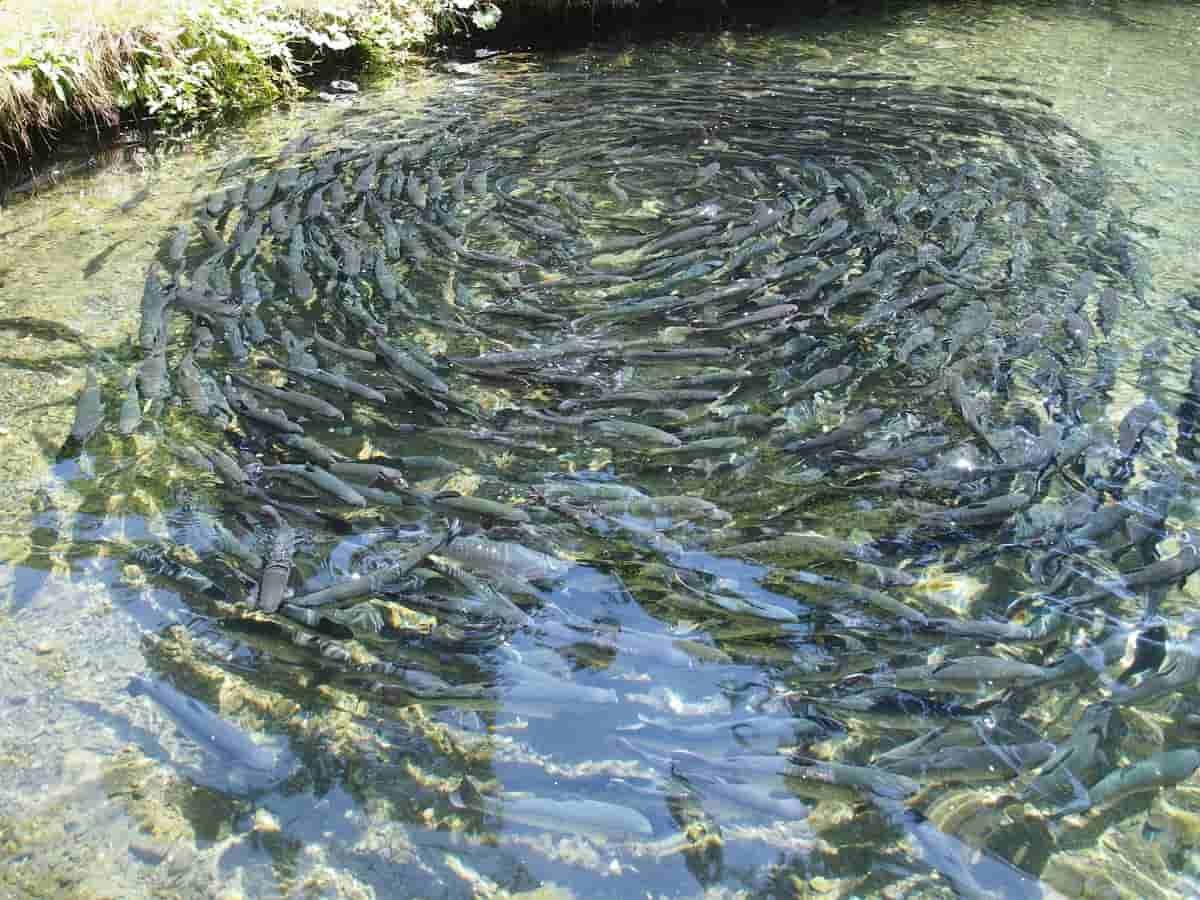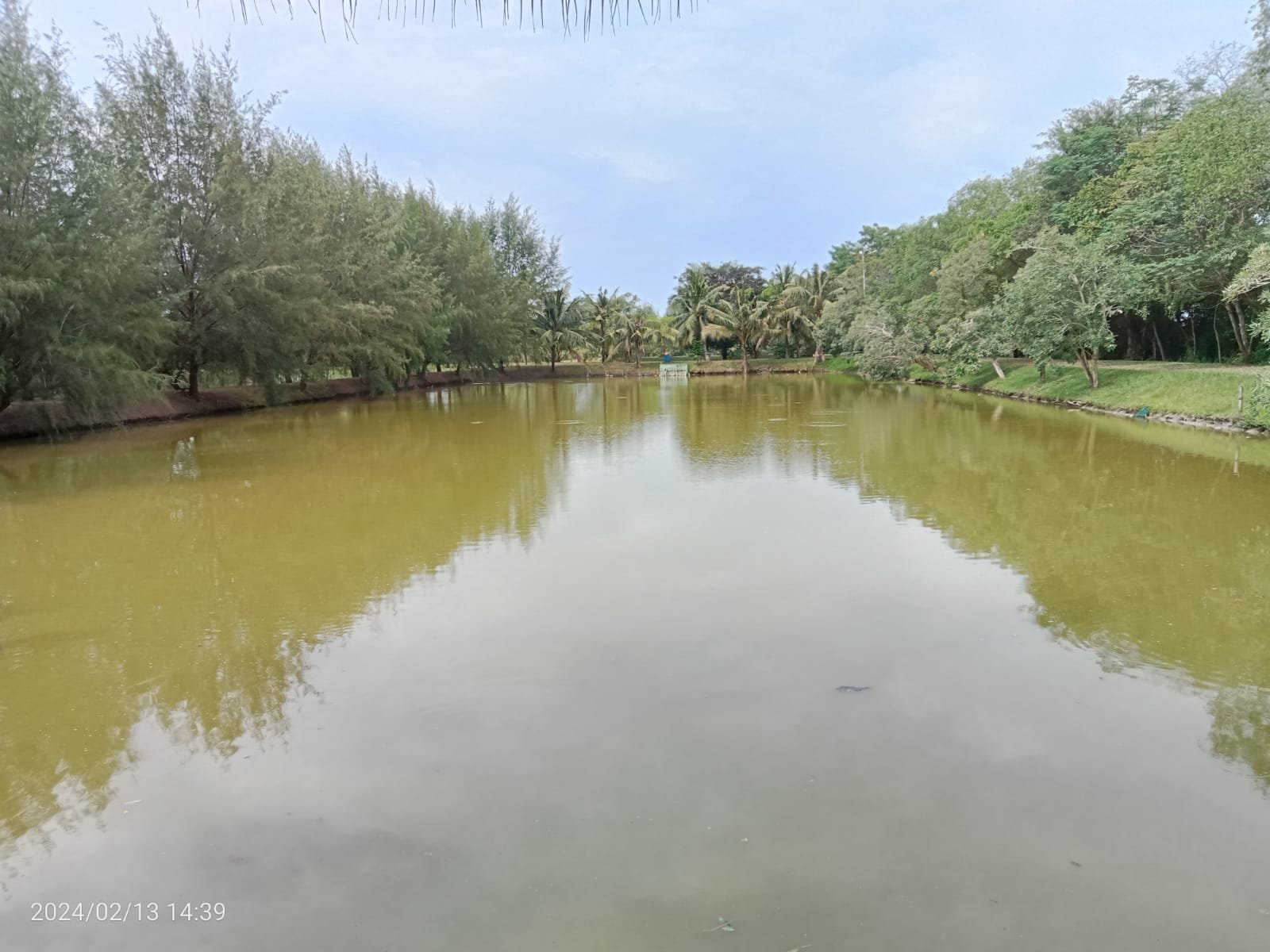Pond fish breeding is an exciting and rewarding activity that allows you to create a vibrant aquatic ecosystem in your backyard. Whether you aim to enhance your garden’s beauty, produce fish for consumption, or pursue a hobby, this guide provides essential insights into breeding fish in a pond. By understanding the process and meeting the needs of your fish, you can achieve great success.
Read Also: Pond Management for Beginners
Contents
Understanding Pond Fish Breeding

Source: agrifarming.in
Pond fish breeding involves creating an environment where fish can reproduce naturally or with assistance. This activity combines biology, environmental management, and a touch of creativity. For beginners, understanding the basics of fish reproduction and the specific requirements of pond fish species is the first step.
The process entails selecting the right fish, preparing the pond, encouraging breeding, and nurturing the offspring (fry). With careful planning, breeding fish in a pond can be both enjoyable and sustainable, offering benefits such as biodiversity and personal satisfaction.
Choosing the Best Fish for Breeding
Before you start fish breeding, you need to know which fish are most suitable for farming, such as:
1. Factors to Consider
Selecting the right species for your pond is a crucial step in pond fish breeding. Each species has unique requirements for reproduction, including specific water conditions, diet, and habitat needs.
Popular choices for beginners include ornamental fish like koi and goldfish, as well as fast-growing species like tilapia and catfish for food production.
Koi and goldfish are ideal for aesthetic purposes, as they are hardy, beautiful, and relatively easy to breed. On the other hand, tilapia and catfish are perfect for those looking to explore aquaculture due to their adaptability and economic value.
2. Compatibility with Pond Conditions
Before introducing fish, consider the size of your pond, local climate, and available resources. Species like koi prefer calm, spacious waters with moderate temperatures, while tilapia thrive in warmer environments.
Researching your chosen species’ preferences will help you provide an ideal setting for successful pond fish breeding.
Preparing Your Pond
When preparing a pond, there are two general things you should pay attention to:
1. Water Quality
Healthy water is the cornerstone of successful pond fish breeding. Regularly monitor parameters such as pH levels (6.5–8.0 is ideal), ammonia, and nitrite levels.
Install a filtration and aeration system to keep the water clean and oxygen-rich, promoting healthy fish and encouraging breeding activity.
2. Habitat Design
Design your pond to mimic a natural habitat. Include aquatic plants like water lilies, reeds, and submerged vegetation, which serve multiple purposes: maintaining water quality, offering spawning surfaces, and providing shade. Adding rocks, driftwood, and other structures creates hiding places for fry, protecting them from predators.
Encouraging Breeding in Pond Fish
To encourage fish breeding in ponds, there are several important things you need to know:
1. Recognizing Breeding Readiness
Pond fish breeding begins when the fish are ready to spawn. Males often display brighter colors and territorial behavior, while females may appear rounder as they develop eggs. Observe these physical and behavioral changes to identify breeding pairs.
2. Stimulating Natural Reproduction
Recreate the fish’s natural breeding conditions to stimulate spawning. For instance, adjust water temperatures to match the species’ breeding season—koi often spawn when the water is between 20°C and 25°C. Increasing daylight exposure and providing a protein-rich diet can also encourage reproduction.
Managing Spawning and Fry Development
Two things when you manage spawning and fry development, among others:
1. The Spawning Process
When spawning occurs, fish lay eggs on plants or designated breeding mats. Fertilized eggs typically appear translucent, while unfertilized ones are opaque. Removing unfertilized eggs helps maintain water quality and prevents fungal infections.
2. Caring for Fry
After the eggs hatch, fry require specific care to survive and grow. Feed them finely ground food or specialized fry feed, and maintain optimal water conditions. Protecting fry from predators is critical; creating separate nursery areas in the pond ensures their safety.
Maintaining a Sustainable Pond Ecosystem
To maintain a sustainable pond ecosystem, of course you have to do the following:
1. Regular Maintenance
A healthy pond environment is essential for continuous pond fish breeding. Conduct routine water tests and remove excess organic material like decaying plants and fish waste. Proper filtration and aeration systems help maintain the balance needed for a thriving fish population.
2. Predator Control
Predators such as birds, frogs, and larger fish can threaten eggs and fry. Protect your pond with physical barriers like netting or floating covers. Adding dense vegetation or artificial shelters gives fry a safe place to hide.
3. Population Management
Overcrowding can stress your fish and compromise breeding success. Periodically assess the pond’s population and relocate or sell surplus fish. Proper management ensures a balanced ecosystem that supports ongoing reproduction.
Overcoming Challenges in Pond Fish Breeding
While pond fish breeding is rewarding, it can also be challenging. Poor water quality, disease outbreaks, and low fry survival rates are common issues. Regular monitoring and maintenance are key to addressing these challenges.
Another issue is predation, which can significantly reduce fry numbers. Enhancing pond security with barriers and providing hiding spots helps mitigate this problem. Additionally, quarantining new fish before introducing them to your pond prevents the spread of disease.
Benefits of Pond Fish Breeding
Pond fish breeding offers numerous advantages beyond the joy of raising fish. It enhances your garden’s aesthetic appeal, promotes environmental conservation, and can be a source of income. Breeding fish like koi, goldfish, or tilapia also contributes to biodiversity and sustainable practices.
Moreover, the process fosters a deeper connection with nature, providing a hands-on experience in nurturing life. Whether you are breeding ornamental fish or edible species, the satisfaction of creating a balanced ecosystem is unparalleled.
Conclusion
Pond fish breeding is an exciting journey that combines patience, knowledge, and care. By selecting the right fish species, preparing a suitable pond environment, and ensuring proper maintenance, you can create a thriving aquatic ecosystem.
As you gain experience, the rewards of pond fish breeding will become increasingly evident, from the beauty of colorful fish to the joy of watching your fry grow into healthy adults. Start your journey today, and transform your pond into a vibrant hub of aquatic life.
Pippo is passionate about coffee beans, exploring their unique varieties and cultural significance. He has a strong interest in agritech, focusing on innovations that drive sustainable farming. Beyond agriculture, he is also dedicated to the field of aquaculture and its future potential. His curiosity and enthusiasm connect these fields, reflecting a commitment to sustainability and growth.


